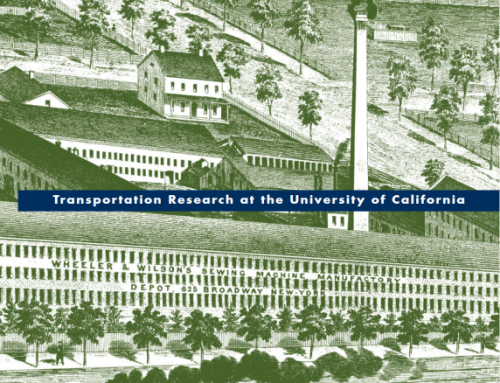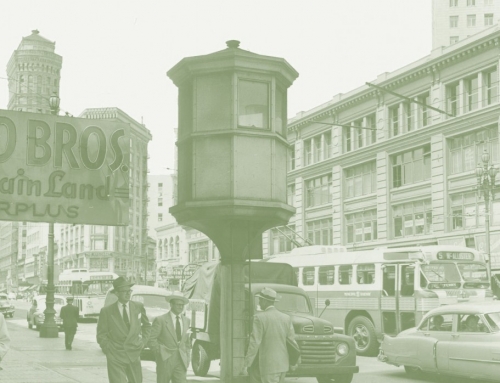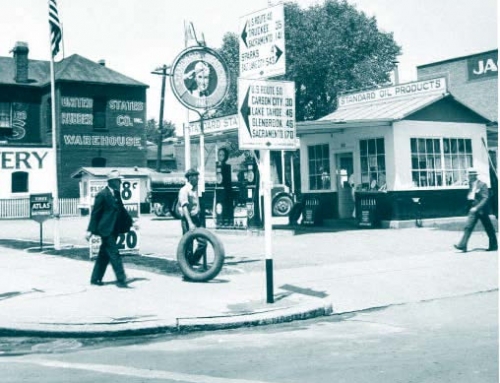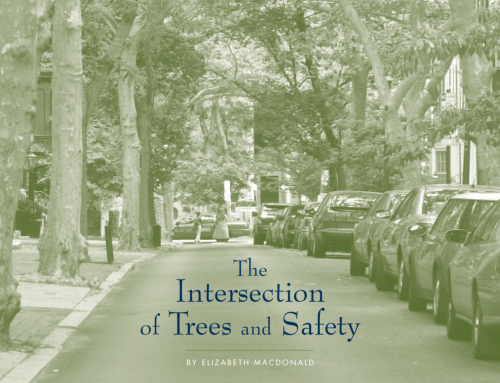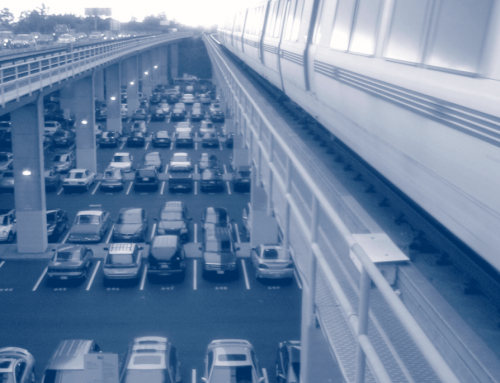When gasoline prices rise, it makes the news. Reporters mob gas stations to ask drivers how they are dealing with the higher prices. Many drivers say, “What can I do? I have to drive.” Some drivers declare they will curtail their driving while others complain of price gouging and oil company conspiracies. We know that few drivers adjust their driving behavior much in response to gasoline price changes on the scale that occurred during our study, but we do see that sales of smaller vehicles have increased, and that hybrids are getting lots of attention. But how do consumers really think about and respond to gasoline prices? Do they know how much they spend on gasoline over the course of a year, or do they think only in terms of price per gallon? When they buy a car, do they think about fuel costs over time, are they just looking for high miles per gallon (MPG)?
Studying Car Buyers
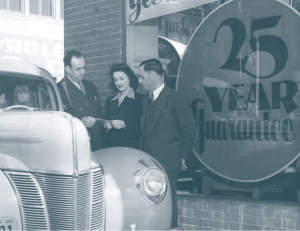 In 2003 and 2004 we studied consumers’ knowledge, beliefs, and behaviors relative to the price, purchase, and use of fuel, as well as how these elements influenced vehicle purchases. During the interview period, gas prices rose from around $1.60 to just over $2 a gallon. We conducted 57 interviews in the homes of Northern Californians who had recently bought a vehicle or were just about to buy a vehicle. We asked mostly open-ended questions and probed for in-depth answers. We gave more attention to the context and validity of the information we received—what some researchers call qualitative research—than to its statistical reliability.
In 2003 and 2004 we studied consumers’ knowledge, beliefs, and behaviors relative to the price, purchase, and use of fuel, as well as how these elements influenced vehicle purchases. During the interview period, gas prices rose from around $1.60 to just over $2 a gallon. We conducted 57 interviews in the homes of Northern Californians who had recently bought a vehicle or were just about to buy a vehicle. We asked mostly open-ended questions and probed for in-depth answers. We gave more attention to the context and validity of the information we received—what some researchers call qualitative research—than to its statistical reliability.
We stratified our respondents into nine “lifestyle sectors” we thought might have different sensibilities about fuel use. For example, we defined several groups we thought would have the awareness and the skills to be particularly sophisticated in their accounting, such as computer engineers, finance professionals, business owners, ranchers and farmers, and even buyers of hybrid vehicles.
The interviews unfolded in four phases. In the first three, we were careful not to blurt out anything like, “So, what do you think about fuel economy?” Rather, we listened closely as households told us their stories about buying and driving cars. The first interview phase covered the history of all vehicles the household had owned. These histories varied from extensive to brief. Some respondents had owned twenty or more vehicles during their lifetime. Others, especially graduating college students, may have been buying their first car. The second phase gave us a detailed account of the household’s most recent vehicle purchase. In the third phase, we proposed the hypothetical purchase of another new vehicle in which we inserted “fuel economy” as one of several vehicle attributes for the household to consider.
Few households discussed fuel economy during the first three phases of their interviews. The issue of fuel costs most commonly arose in the households of enlisted military personnel (who have very limited income), in households facing an abrupt increase in driving, and in households of graduating college students, who often own cars which were purchased for them by parents. For some students, fuel costs were their entire cost of operating a vehicle.
In the fourth interview phase we inquired about fuel economy and fuel use directly. We asked households to provide details about the fuel economy of their current cars, their day-to-day fuel use and costs, and the importance of fuel economy in past and present vehicle purchases.
Information Gap
 Drivers were able to tell us what it cost to fill their tank and the per-gallon price they paid during their most recent trip to a gas station—if that trip had been made the day of our interview or the day before. If it was any further in the past, then confident answers were replaced by tentative estimates. Many were uncertain because when they paid by credit card they didn’t always look at what they spent. Most households confessed to having no idea of their fuel costs over any period of time—weekly, monthly, or annually. They did not budget, manage, or track fuel costs in any systematic way.
Drivers were able to tell us what it cost to fill their tank and the per-gallon price they paid during their most recent trip to a gas station—if that trip had been made the day of our interview or the day before. If it was any further in the past, then confident answers were replaced by tentative estimates. Many were uncertain because when they paid by credit card they didn’t always look at what they spent. Most households confessed to having no idea of their fuel costs over any period of time—weekly, monthly, or annually. They did not budget, manage, or track fuel costs in any systematic way.
Further, many drivers could not tell us with any certainty how many miles per gallon (MPG) their current vehicle got, which was not surprising since many cars do not have fuel economy gauges. Those people who could tell us had either calculated it when they refueled or recalled it from the vehicle’s window sticker (only an option if they had purchased the car new). A few who calculated MPG did so to track the condition of their engine, not fuel costs. They had learned from someone—their father or their mechanic, for example—that if they saw a drop in MPG, there was something wrong with the engine.
We also asked about willingness to pay for a vehicle with higher fuel economy and what payback period they expected for the increased cost. We got a range of answers. Even households with high financial skills struggled to guess what improvements in fuel economy were worth to them in dollars and cents. When we asked one couple, both accountants, what they spent each year on gasoline, he offered $2,000, she offered $4,000, and after further discussion they laughed and said, “Make it $3,000.” We knew from their low annual vehicle miles traveled that this amount was far too high. More often, this question brought a puzzled look from participants, and was answered with a lift in their voices, suggesting that respondents were guessing. They often seemed to be watching us to see if we thought their answer was a good one.
When we inquired about getting their money back on investments in better fuel economy—a payback period—some searched for an answer and then said, “I guess it would be nice if it were paid off when the loan was paid off,” picking the only time frame they associated with the question. When respondents did offer a desired payback period, we asked where they got the number. In almost all cases, interviewees said they were guessing, and that this simply was not the way they had ever thought about buying a car. One banker we interviewed lit up when we asked this question. He said, “I know what you’re talking about—that’s a payback calculation. I do that every day. But I’ve never done that with a car. I buy what I need to look successful. Besides, how would I ever calculate a payback when I have no idea what gasoline will cost in the future?” A few said with apparent certainty, “one year” or “two years.” However, when we inquired where the number came from, they simply asserted that they spent lots of money on gasoline and would quickly earn their money back through savings. A smaller group proposed longer terms—eight to ten years—noting that they keep their cars for a long time.
Several households explained that their lack of attention to gas costs was due to the fact that they felt they couldn’t do anything about it; they had to drive as much as they did to lead the lives they had constructed for themselves.
The Hybrid Choice
Numerous articles in the mainstream media and the automotive press have noted that buyers of hybrids do not make the extra cost of their vehicles back through gas savings. These articles contended that hybrid vehicles cost $2,000 to $3,000 more than vehicles of similar size and power. Our small group of hybrid vehicle buyers confessed they had never thought of or calculated a payback when they bought their hybrid. In fact, these people surprised us with how little attention they paid to fuel costs. They did pay a lot of attention to fuel economy. Drivers of hybrids confessed that they watched their fuel economy gauges compulsively. But none kept track of costs. They liked how much better their car’s MPG was than other cars, and their gauges made them feel good about their vehicle choice. It turns out they bought hybrids mainly for ideological reasons, and not to save money.
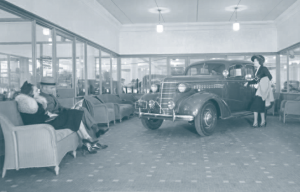 Surprised by our findings, we designed a follow-up study to look at a larger group of hybrid buyers. We wanted to get a better sense of what motivated purchases of the highest fuel economy vehicles on the market. We built on what we learned from the first study: that consumers look to the media, to experts, and to other consumers to help them decide what to do. Their decisions around cars, fuel economy, and hybrid vehicles drew on social awareness, but not on calculations. They saw the price of gasoline posted at every gasoline station. They listened to reporters talk about gasoline prices on the news. They talked about cars with friends at church or work.
Surprised by our findings, we designed a follow-up study to look at a larger group of hybrid buyers. We wanted to get a better sense of what motivated purchases of the highest fuel economy vehicles on the market. We built on what we learned from the first study: that consumers look to the media, to experts, and to other consumers to help them decide what to do. Their decisions around cars, fuel economy, and hybrid vehicles drew on social awareness, but not on calculations. They saw the price of gasoline posted at every gasoline station. They listened to reporters talk about gasoline prices on the news. They talked about cars with friends at church or work.
We found in this second study that decisions about fuel economy were governed more by emotions than by analysis, more by what fuel economy means than by its monetary value. In the months leading up to a purchase, these hybrid buyers were thinking and conversing about the high price of gasoline, new technologies, national security, the future, and the environment. When they went to buy a hybrid, they did not comparison-shop fuel-efficient compact cars. The hybrid buyers in this study were likely to have only one vehicle in their choice set: the particular hybrid they bought. They were more likely to be replacing a pick-up truck, SUV, or high-priced luxury car than a small economy sedan. And they often described the decision to buy a hybrid as an exciting moment of commitment to a new set of values.
If a hybrid buyer did talk about fuel economy, it was usually as an aesthetic value rather than a financial one, experienced through their new fuel economy gauges. Some hybrid drivers can watch their vehicle’s fuel economy minute-to-minute. One young man talked about the great pleasure he received from checking his fuel economy gauges at the end of a trip and seeing “what a good job” he did. Most of our hybrid buyers mentioned how much less often they refuel and even how much they are spending per fill-up. But they are no more likely than other drivers in our previous study to calculate costs over time. Some hybrid buyers are concerned about costs, but the costs are more symbolic than calculated, and are rooted in a buyer’s attempt to look financially smart to themselves, friends, family members, and coworkers.
We close with the story of an electrical engineer who said that he had studied the costs of different vehicles carefully. In fact, he was the only household out of 107 in our two studies to have constructed a spreadsheet of costs (including his estimated lifetime fuel costs) for several cars he was considering to replace his BMW sedan. He confessed that in the end he purchased the vehicle that he estimated made the least sense financially—a Ford Escape Hybrid. His reasons were both personal and symbolic: it was the vehicle he liked the most, and he thought buying it was a way to send a signal to an American carmaker about the sort of cars he wanted them to build.
Conclusions
The lack of knowledge and the inattention to costs by cars buyers may surprise some researchers. In defense of our survey subjects, car manufacturers don’t make it easy for drivers to calculate or track MPG and fuel costs. Even those hybrid vehicles with advanced energy-use instruments show fuel economy only over short periods of time, and don’t track daily, weekly, monthly, annual, or vehicle lifetime costs.
Also, the differences in cost resulting from diverse driving styles, price variations between gas stations, or differences in fuel economy between similar car models are often small. So it’s unsurprising that even hybrid buyers don’t take the time to make calculations or comparison shop for vehicles of similar size or class.
Is there a gasoline price threshold at which car buyers start doing more calculations? Gasoline prices in parts of northern California exceeded $3.60 per gallon twice since we interviewed our last household. While not ruling out that high prices may have changed behaviors—it may have prompted some consumers to buy vehicles with higher fuel economy—the people in our studies did not indicate that they plan to spend more time making such calculations. If more vehicles had instruments that tracked fuel use and costs, consumers might pay more attention to them. However, in many cases, such instrumentation might only demonstrate that different driving behaviors and even differences between similar car models do not bring large dollar payoffs.
This does not mean that consumers do not care about fuel economy. A quick look at the current car market shows that buyers are shifting away from gas guzzlers. This is happening in a period of heightened attention to many issues related to fuel economy, including climate change and energy security as well as gas prices. But we cannot develop policies or create behavior models that assume drivers calculate costs or even that private cost is the main factor motivating consumers to choose better fuel economy. To be successful, vehicle choice models and policies based on those models must investigate more thoroughly all the aspects of fuel economy that motivate consumers. The payoff is often not so much at the pump or the bank. It comes when we’re sitting at the dinner table with family, when we’re talking with coworkers around the water cooler, or when we check the fuel economy gauge at the end of a trip to see what a good job we’ve done.
Further Readings
Rusty R. Heffner. Semiotics and Advanced Vehicles: What Hybrid Electric Vehicles (HEVs) Mean and Why it Matters to Consumers. Institute of Transportation Studies, University of California, Davis. PhD Dissertation. 2007
Tom S. Turrentine and Kenneth S. Kurani, “Car Buyers and Fuel Economy?” Energy Policy, vol. 35, 2007.


